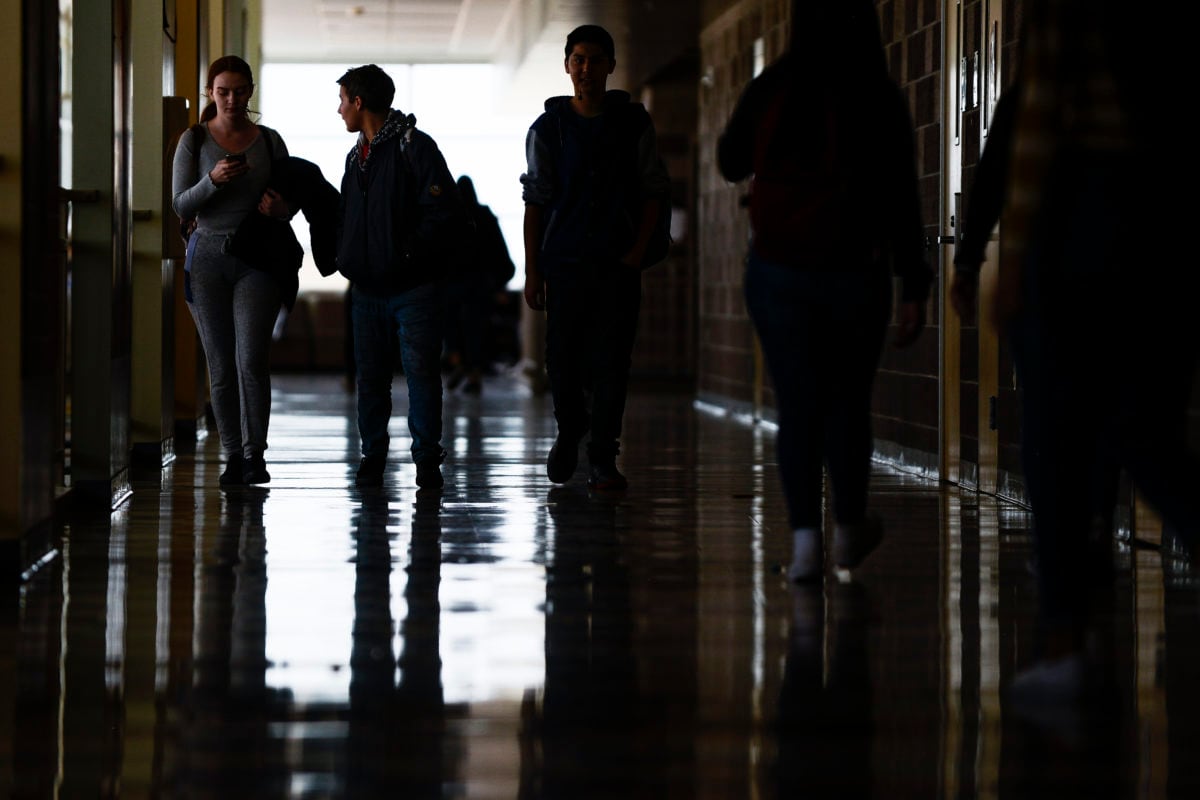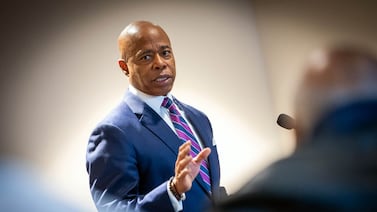Students in Adams 14 will have fewer mental health professionals in schools this coming year — and many sessions will still remain virtual — even if they do make it back to the classroom.
At a time when the mental health needs of all children, and even adults, are rising, school districts across the country are struggling with how they will provide mental health services, while limiting in-person contacts.
The changes in Adams 14 are not primarily driven by the pandemic — instead, Community Reach Center, which contracts with the district to provide counseling services, didn’t obtain the liability insurance that the district sought for in-person sessions. That means the contractor’s providers will conduct all their sessions online.
The prospect of remote counseling, with all its drawbacks, is one that families in many districts could be facing.
In Adams 14 some parents are worried their children won’t get all the help they need.
“My kids, they’re apprehensive to go back to school,” said Brandi Valdez, a mother of three Adams 14 students. “This is a huge concern.”
Adams 14 previously contracted with Community Reach Center for nine therapists, providing a large portion of the district’s counseling services. Only eight contract therapists will work with the district this year.
Adams 14 also has its own mental health professionals. There are 22 full-time staff to help serve the approximately 6,500 students in the district. That number includes therapists, psychologists, and social workers. These district staff members will be allowed to offer services in person when school buildings eventually open.
District officials say that Adams 14 will be prepared to help all children. The district is rolling out a new social and emotional learning curriculum for all grade levels, including a toolkit for students returning to school after experiencing trauma. The curriculum is available in English and Spanish, and will function when the district is teaching remotely, as well as back in school buildings.
Officials also pointed out that in addition to the contracted counselors that will be offering services remotely, the district has several in-house mental health professionals who will be in school buildings when students return.
“We are trying to make sure families have what they need,” said Mindy Roden, executive director of student services for Adams 14. “It’s new for all of us.”
Counseling services first went remote in the spring when schools closed to slow the spread of the coronavirus.
As the district negotiated the new contract with Community Reach Center, “our world became more uncertain,” said Shelagh Burke, the district’s executive director of federal programs, intervention services, technology and schools.
This week, Adams 14 announced its plan to push back the start of the school year to Aug. 24, and to also start remotely for the first quarter of the semester. It’s possible the district could move to a hybrid or in-person model later in the year.
Valdez said her three foster children, whom she’s in the process of adopting, all have mental health needs. She praises Community Reach Center therapists who have helped her advocate for her children.
In the spring, the students did continue receiving services virtually, but she doesn’t feel they were as effective.
“It helps but it’s not somebody there that can pat you on the back,” Valdez said. “It’s a lot more difficult to practice breathing through a screen.”
Valdez, like many Adams 14 families, is an essential employee working outside of the home. When schools closed, Valdez’s father watched the children, but he struggled to help them engage with online school work.
“I try to be here as much as I can, but unfortunately that’s not always possible,” Valdez said.
Rick Doucet, the director for Community Reach Center, is concerned that the services aren’t ideal for some students — or financially sustainable for the center.
He said children tend to be more willing to open up in school.
“We were doing it in schools because it’s always easiest to get kids where they’re most vulnerable,” Doucet said. “It’s always worked better. If they’re at home it changes everything.”
Doucet said that working online, providers find it difficult to know if they’ve got a student’s full attention. Some students can be multitasking on their computer instead. Some students also have short attention spans or internet connectivity issues.
And based on their experience in the spring, telehealth services on average are shorter than in-person therapy sessions. That means less services for students, and also less billable time for the agency.
But holding students’ attention is also challenging with in-person sessions, Adams 14’s Roden said. For internet access, she said the district has handed out devices and internet modems to families that have requested them. The district also has considered setting up a place at schools where students can connect to the internet or a device for their telehealth appointment if they can’t do it from home.
If school buildings reopen, students would be scheduled to have telehealth sessions during the school day and would have a place in the building where students could connect to a virtual appointment. Mental health professionals employed by the district and based in schools also will be available.
But some districts, including Adams 14, haven’t mapped out how therapy sessions would work in person if the district had to group students and staff into cohorts.
If psychologists and social workers who meet in person with various students are then counted as part of the small groups created to limit personal exposure, that may throw off planning for those so-called cohorts. Official state guidance says schools don’t have to count those providers in a cohort. If they get sick, however, the model may not function as well as intended to prevent a schoolwide quarantine.
Other parents have voiced concerns that the district services in the spring weren’t well organized, and worry that continued telehealth won’t improve.
“The district’s communication was not there, and that’s what I know had parents very upset,” said Ruby Alvarez, who is considering pulling her children out of the district. “If services are like they were at the end of the last school year, it’s not acceptable for me.”
Doucet said that the Community Reach Center is working to improve its services, knowing that telehealth “is here to stay,” including for families who don’t feel safe returning to in-person settings yet. But he said that if anyone is concerned about connecting virtually and wants another option, the center will find a way.
“People can get help,” Doucet said. “It may not be in school, but they will get the help they need.”








